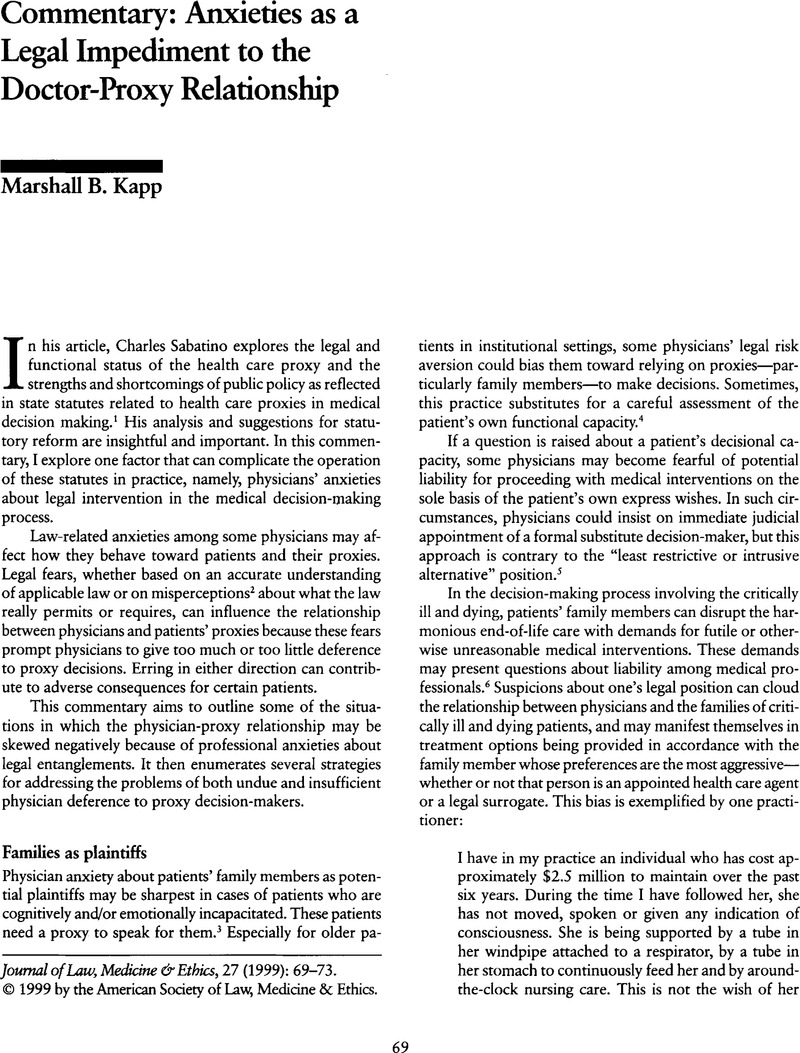Crossref Citations
This article has been cited by the following publications. This list is generated based on data provided by Crossref.
Post, Linda Farber
Blustein, Jeffrey
and
Dubler, Nancy Neveloff
1999.
The Doctor-Proxy Relationship: An Untapped Resource.
Journal of Law, Medicine & Ethics,
Vol. 27,
Issue. 1,
p.
5.
Collopy, Bart J.
1999.
The Moral Underpinning of the Proxy-Provider Relationship: Issues of Trust and Distrust.
Journal of Law, Medicine & Ethics,
Vol. 27,
Issue. 1,
p.
37.
HICKMAN, SUSAN E.
2002.
Improving Communication Near the End of Life.
American Behavioral Scientist,
Vol. 46,
Issue. 2,
p.
252.





